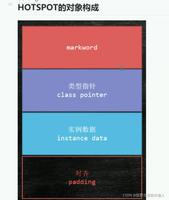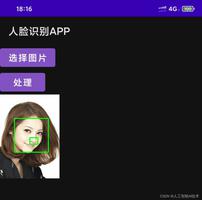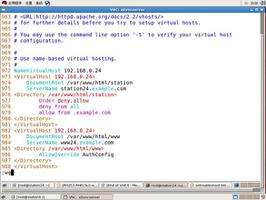详解Android:向服务器提供数据之get、post方式
在这我们首先了解Android客户端向服务器提交数据的底层做法。get、post两种方法提交数据,下面我们用示例了解get以及post方式。
需要在布局文件中增加两个个EditText控件和两个登录的Button控件。其中一个Button是使用get方式提交数据,一个是使用post提交数据。
<EditText
android:layout_width="match_parent"
android:layout_height="wrap_content"
android:id="@+id/et_main_name"
android:hint="请输入用户名"
/>
<EditText
android:layout_width="match_parent"
android:layout_height="wrap_content"
android:id="@+id/et_main_pwd"
android:hint="请输入用户名"
/>
<Button
android:layout_width="match_parent"
android:layout_height="wrap_content"
android:text="登录GET"
android:onClick="getdata"
/>
<Button
android:layout_width="match_parent"
android:layout_height="wrap_content"
android:text="登录POST"
android:onClick="postdata"
/>
一、使用get方式提交数据
需要写一个异步任务类继承AsyncTask,重写它的两个方法。代码如下:
public class MainActivity extends AppCompatActivity {
private EditText et_main_name;
private EditText et_main_pwd;
private HttpURLConnection httpURLConnection;
private URL url;
@Override
protected void onCreate(Bundle savedInstanceState) {
super.onCreate(savedInstanceState);
setContentView(R.layout.activity_main);
et_main_name = (EditText) findViewById(R.id.et_main_name);
et_main_pwd = (EditText) findViewById(R.id.et_main_pwd);
}
//获取GET提交数据的点击事件
public void getdata(View view){
String name=et_main_name.getText().toString();
String pwds=et_main_pwd.getText().toString();
String path="http://192.168.43.143:8080/login/login.xhtml";
new myTask().execute(name,pwds,path,"GET");
}
//写一个异步任务类继承AsyncTask,重写它的两个方法
class myTask extends AsyncTask{
@Override
protected Object doInBackground(Object[] params) {
//获取参数的值
String name = params[0].toString();
String pwds = params[1].toString();
String path = params[2].toString();
String type = params[3].toString();
String s = "uname=" + name + "&pwd=" + pwds;
//判断提交数据的类型1、get 2、post
try {
if ("GET".equals(type)) {//用get方式提交
path = path + "?" + s;
url = new URL(path);
httpURLConnection = (HttpURLConnection) url.openConnection();
httpURLConnection.setRequestMethod("GET");
} else if ("POST".equals(type)) {//用post方式提交
}
httpURLConnection.setConnectTimeout(5000);
if (httpURLConnection.getResponseCode() == 200) {
InputStream inputStream = httpURLConnection.getInputStream();
BufferedReader bufferedReader = new BufferedReader(new InputStreamReader(inputStream));
String result = bufferedReader.readLine();
return result;
}
} catch (MalformedURLException e) {
e.printStackTrace();
}catch (ProtocolException e) {
e.printStackTrace();
} catch (IOException e) {
e.printStackTrace();
}
return null;
}
@Override
protected void onPostExecute(Object o) {
String str= (String) o;
Toast.makeText(MainActivity.this,str,Toast.LENGTH_SHORT).show();
super.onPostExecute(o);
}
}
}
二、使用post方式提交数据
post和get一样需要写一个异步任务类继承AsyncTask,重写它的两个方法。但是post需要设置Content-Length、Content-Type以及对外输出数据。而且请求的路径不同,post相对于比get安全。代码如下:
public class MainActivity extends AppCompatActivity {
private EditText et_main_name;
private EditText et_main_pwd;
private HttpURLConnection httpURLConnection;
private URL url;
@Override
protected void onCreate(Bundle savedInstanceState) {
super.onCreate(savedInstanceState);
setContentView(R.layout.activity_main);
et_main_name = (EditText) findViewById(R.id.et_main_name);
et_main_pwd = (EditText) findViewById(R.id.et_main_pwd);
}
//获取POST提交数据的点击事件
public void postdata(View view){
String name=et_main_name.getText().toString();
String pwds=et_main_pwd.getText().toString();
String path="http://192.168.43.143:8080/login/login.xhtml";
new myTask().execute(name,pwds,path,"POST");
}
//写一个异步任务类继承AsyncTask,重写它的两个方法
class myTask extends AsyncTask{
@Override
protected Object doInBackground(Object[] params) {
//获取参数的值
String name = params[0].toString();
String pwds = params[1].toString();
String path = params[2].toString();
String type = params[3].toString();
String s = "uname=" + name + "&pwd=" + pwds;
//判断提交数据的类型1、get 2、post
try {
if ("GET".equals(type)) {//用get方式提交
} else if ("POST".equals(type)) {//用post方式提交
url = new URL(path);//得到请求的路径
httpURLConnection = (HttpURLConnection) url.openConnection();
//设置Content-Length Content-Type
httpURLConnection.setRequestProperty("Content-Length", s.length() + "");
httpURLConnection.setRequestProperty("Content-Type", "application/x-www-form-urlencoded");
//设置允许对外输出数据
httpURLConnection.setDoOutput(true);
//将用户名密码以流的形式对外输出
httpURLConnection.getOutputStream().write(s.getBytes());
httpURLConnection.setRequestMethod("POST");//数据提交的类型
}
httpURLConnection.setConnectTimeout(5000);
if (httpURLConnection.getResponseCode() == 200) {//判断响应码
InputStream inputStream = httpURLConnection.getInputStream();
BufferedReader bufferedReader = new BufferedReader(new InputStreamReader(inputStream));
String result = bufferedReader.readLine();
return result;
}
} catch (MalformedURLException e) {
e.printStackTrace();
}catch (ProtocolException e) {
e.printStackTrace();
} catch (IOException e) {
e.printStackTrace();
}
return null;
}
@Override
protected void onPostExecute(Object o) {
String str= (String) o;
Toast.makeText(MainActivity.this,str,Toast.LENGTH_SHORT).show();
super.onPostExecute(o);
}
}
}
另外,需要增加网络权限:
<uses-permission android:name="android.permission.INTERNET" />
三、总结
1、get方式与post方式请求的路径(URL地址)不同。
2、post方式需要对请求头的设置。
//设置Content-Length Content-Type
httpURLConnection.setRequestProperty("Content-Length", s.length() + "");
httpURLConnection.setRequestProperty("Content-Type", "application/x-www-form-urlencoded");
3、post方式需要请求内容,而get方式的相应内容在URL地址中。
4、post方式与get方式的请求时所携带的内容大小不同。
get:1k。
post:理论上是无限制的,相对于而言post适合传大量数据。
5、get方式的数据直接显示在URL地址中,这是不安全的;而post方式不会,安全性相对于比较高。
以上就是本文的全部内容,希望对大家的学习有所帮助,也希望大家多多支持。
以上是 详解Android:向服务器提供数据之get、post方式 的全部内容, 来源链接: utcz.com/z/340115.html









